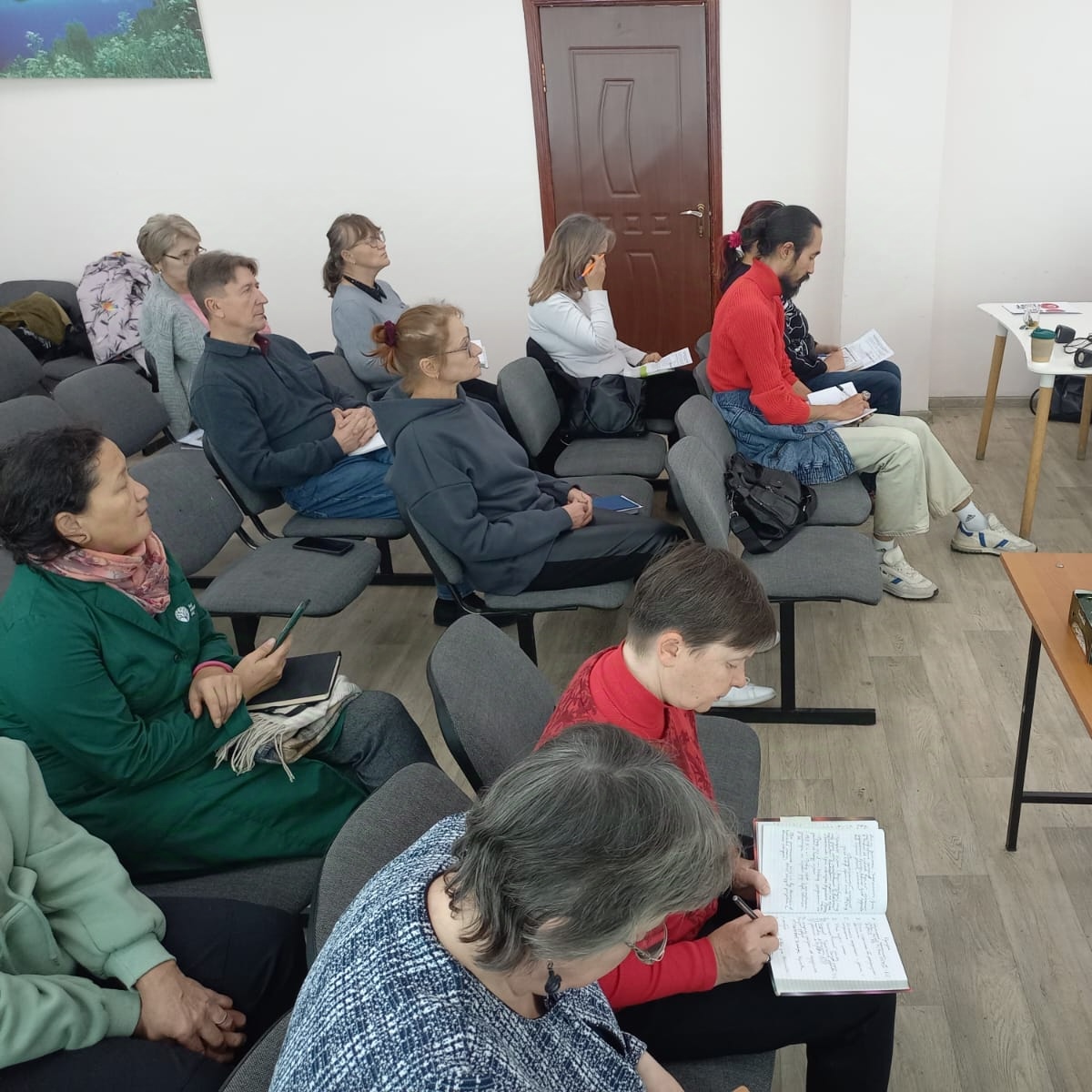The criteria of the International Union for Conservation of Nature’s (IUCN) Red List play a pivotal role in the objective assessment of plant species' extinction risks. These criteria are employed not only for global evaluations but also for the development of national Red Data Books. On 16–17 October, the Institute of Botany and Phytointroduction hosted a training session titled "Methodological Approaches to Applying IUCN Criteria at the Regional Level."
The criteria of the International Union for Conservation of Nature’s (IUCN) Red List play a pivotal role in the objective assessment of plant species' extinction risks. These criteria are employed not only for global evaluations but also for the development of national Red Data Books. On 16–17 October, the Institute of Botany and Phytointroduction hosted a training session titled "Methodological Approaches to Applying IUCN Criteria at the Regional Level." Over 40 researchers, conservation specialists, and naturalists from Kazakhstan, Uzbekistan, and Russia attended.
Preventing species extinction is one of humanity’s greatest challenges. Extinction risk assessments provide invaluable data, essential for proactive biodiversity conservation efforts. This year marks the 60th anniversary of the publication of the first International Red Data Book, now known as the Red List.
“The Red List assessment system focuses on quantitative parameters. It helps to consider critical factors such as population decline, range restriction, and small population sizes, which in turn allow for the effective prioritisation of species for conservation,” explained Anna Belousova, certified IUCN trainer, PhD in Biological Sciences. “This enables the development of national biodiversity conservation strategies aimed at preventing the extinction of rare and vulnerable species while adhering to the highest international standards.”
The International Union for Conservation of Nature is one of the world’s most respected environmental organisations. It unites over 18,000 experts who volunteer their expertise, as well as more than 1400 affiliated organisations.
“IUCN Red List criteria are crucial to the work of the IUCN Species Survival Commission and its expert working groups,” highlighted Alexander Dubynin, organiser of the training and researcher at the Institute of Botany and Phytointroduction. “A Wild Tulips Working Group has recently been formed, with Kazakhstani specialists participating. These criteria are also applied to identify Key Biodiversity Areas (KBAs) and Important Plant Areas (IPAs), as well as to assess the success of species conservation and recovery (Green List).”
Throughout the training, participants examined the practical application of Red List criteria, including case studies such as the extinction risk assessment of the extremely restricted paleoendemic Niedzwedzkia (Incarvillea semiretschenskia) in Kazakhstan and the development of a new edition of Uzbekistan’s Red Data Book, where IUCN criteria are now officially adopted at the national level. Upon completion, participants were awarded certificates, with online participants set to receive theirs electronically within the week.
The event was both productive and inspiring, with overwhelmingly positive feedback from participants.
“The experience was outstanding, and I hope we can repeat the event, focusing on practical examples of applying the criteria,” said Inessa Selyutina.
“Thank you for organising such a high-quality training on the IUCN Red List criteria. We gained valuable insights into species conservation status assessment and plan to use this knowledge to evaluate the conservation status of endemic plants in Kazakhstan,” commented Serik Kubentaev.
“A big thank you to the trainer and organisers for their excellent preparation and delivery, and for the opportunity to learn important, timely information about applying IUCN criteria at the regional level,” added Nadezhda Gemedzhieva.
“Everything was excellent: the professionalism of the lecturer and organisers, the friendly atmosphere, the genuine interest of colleagues, and the inspiration for future projects,” reflected Ruslan Nurkhanov.
In her concluding remarks, Gulnara Sitpaeva, General Director of the Institute of Botany and Phytointroduction, said, “We are currently developing a national strategy for the conservation and sustainable use of biodiversity in Kazakhstan. Learning and applying international criteria for assessing plant extinction risk is crucial from both a scientific and practical perspective. We plan to evaluate at least 50 rare, endemic, and threatened species using these criteria. In the coming years, we will also be revising the list of protected plant species for Kazakhstan’s Red Data Book. In this context, a deeper understanding of the Red List methodology is timely and vital for our institute’s team.”





 .
. 
